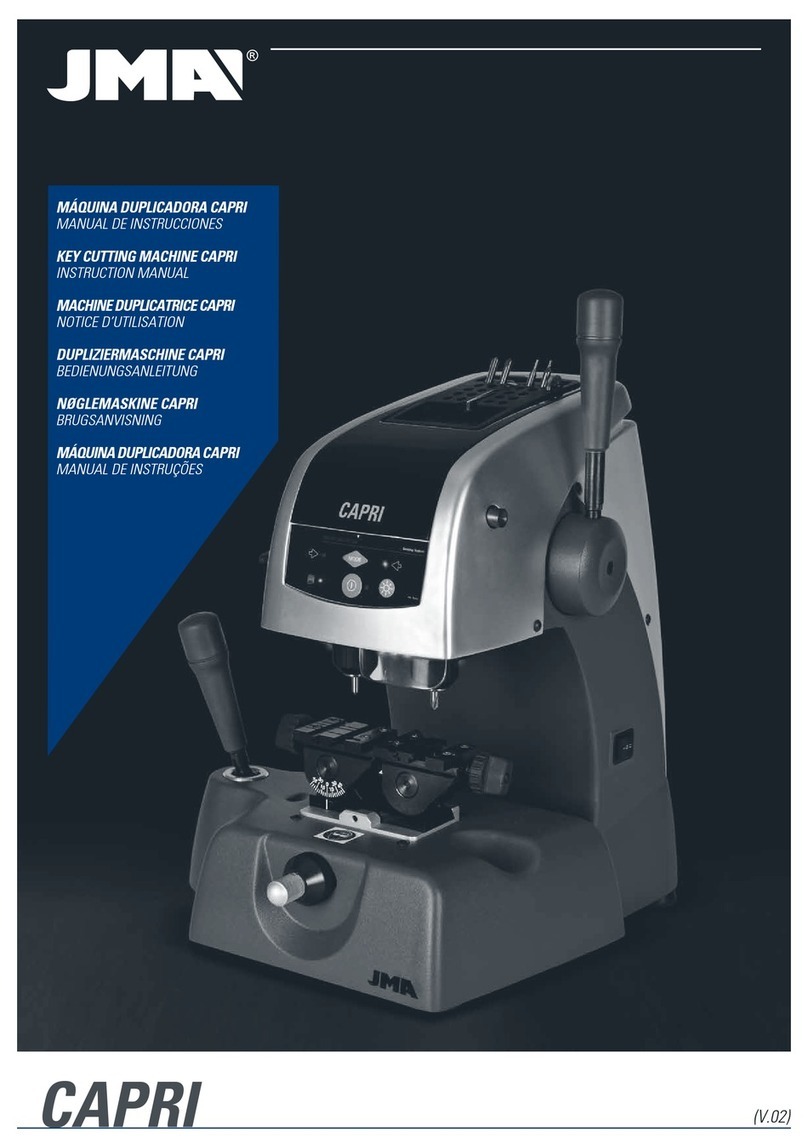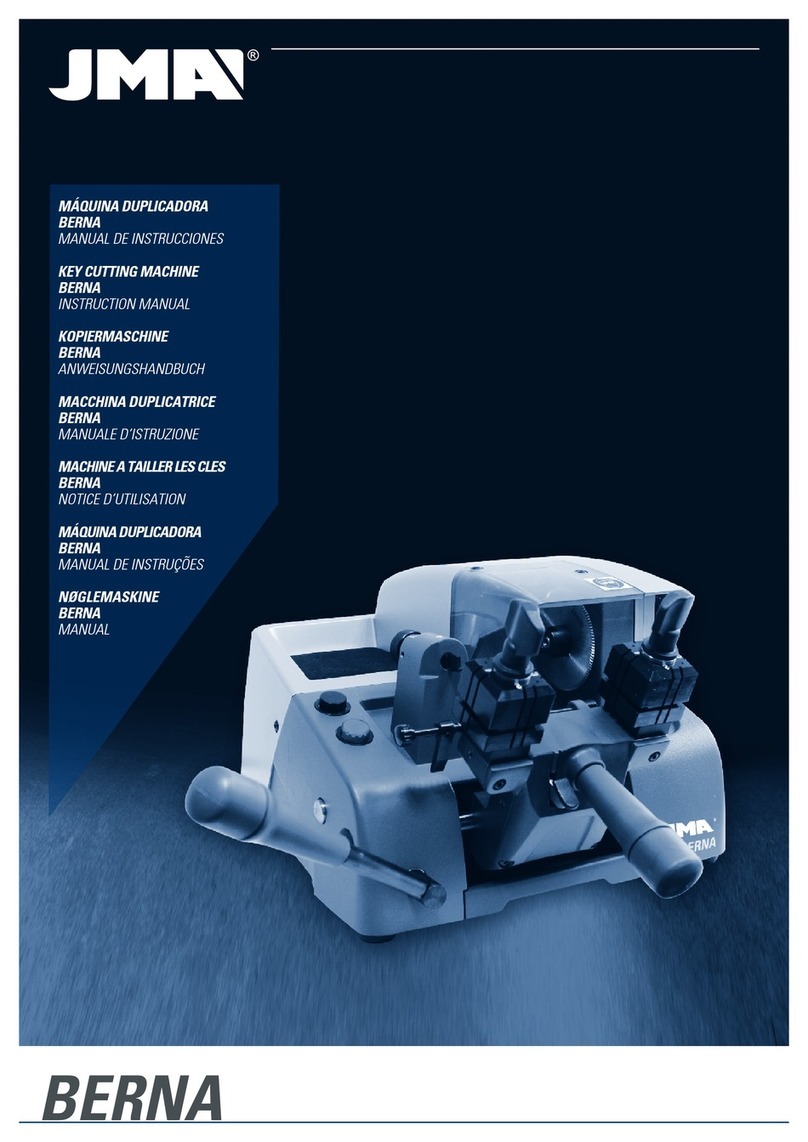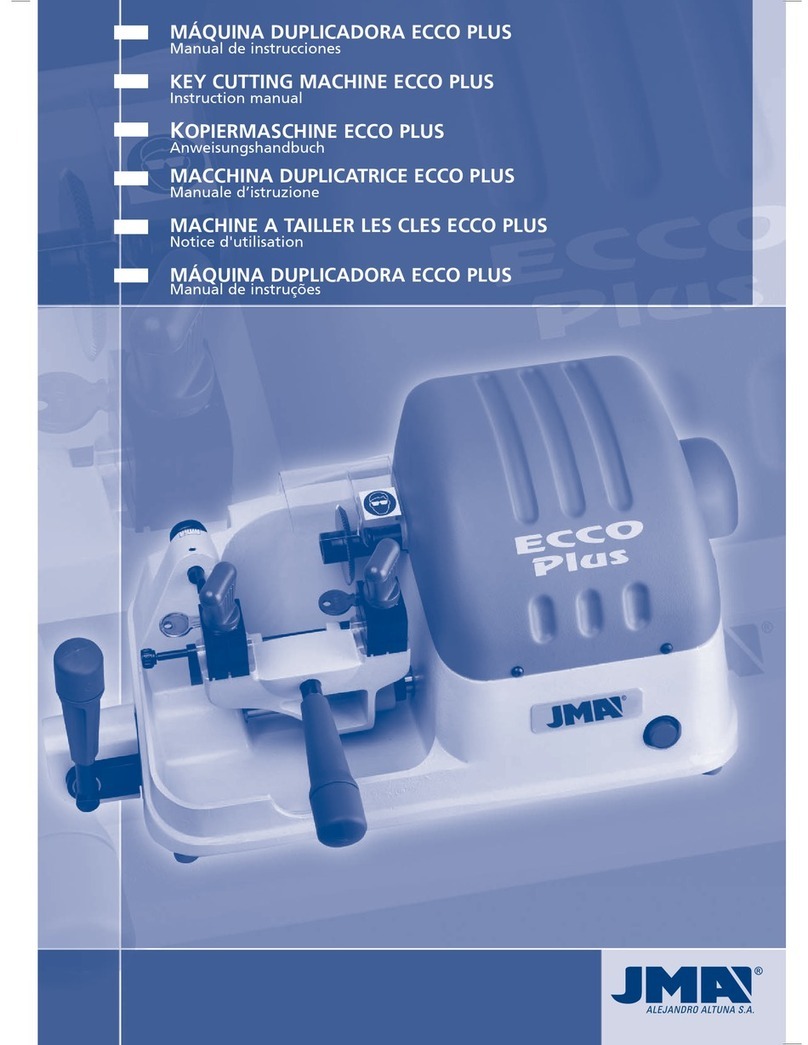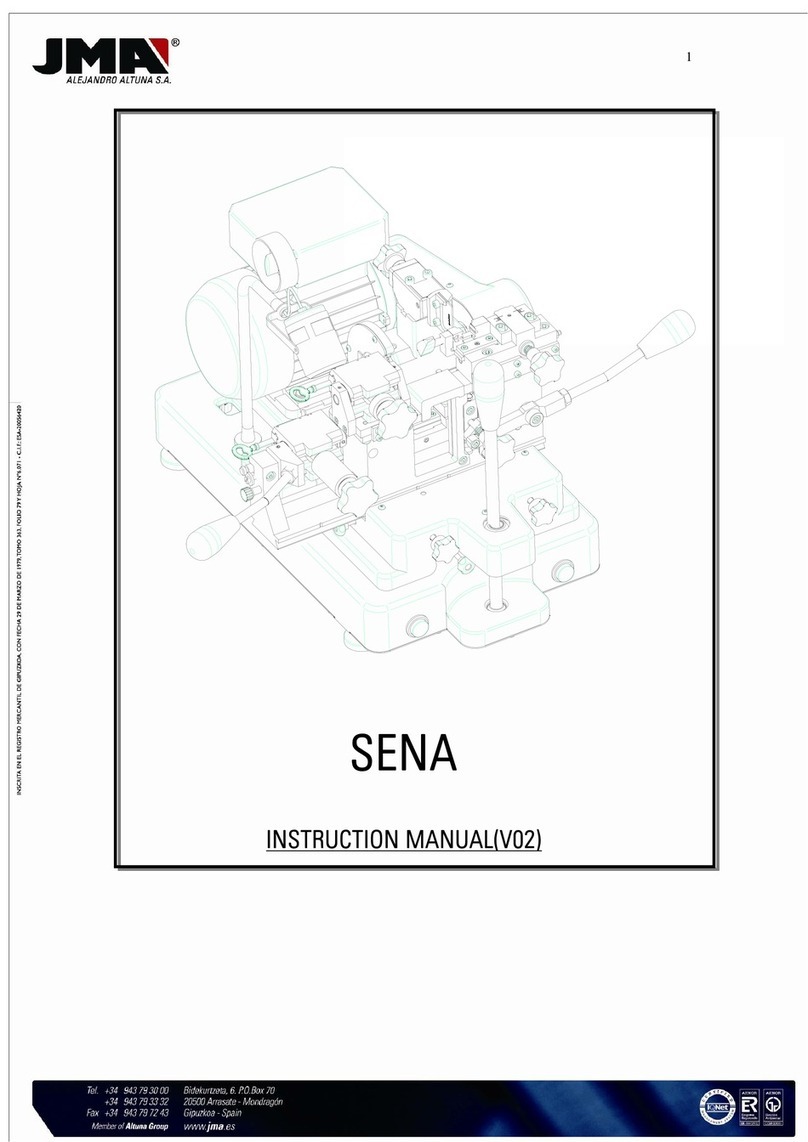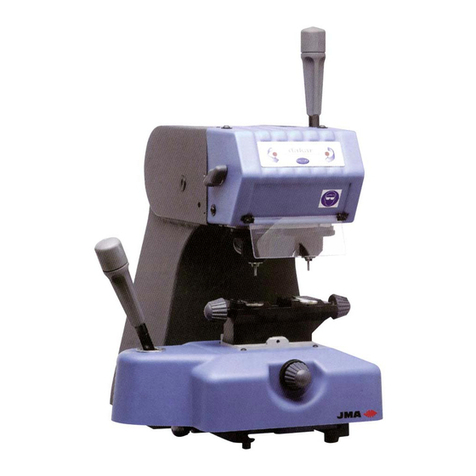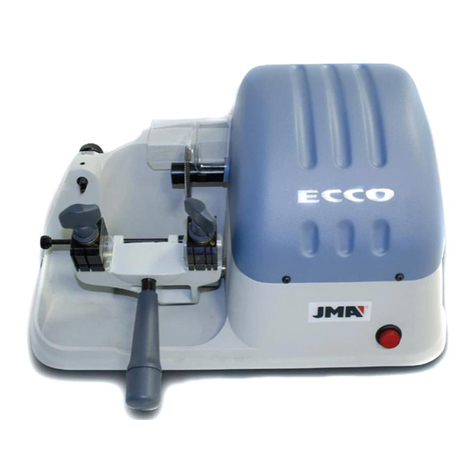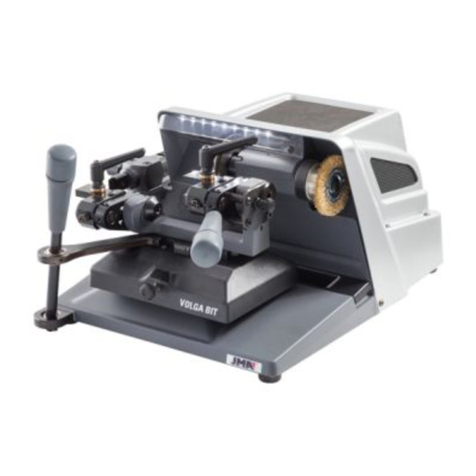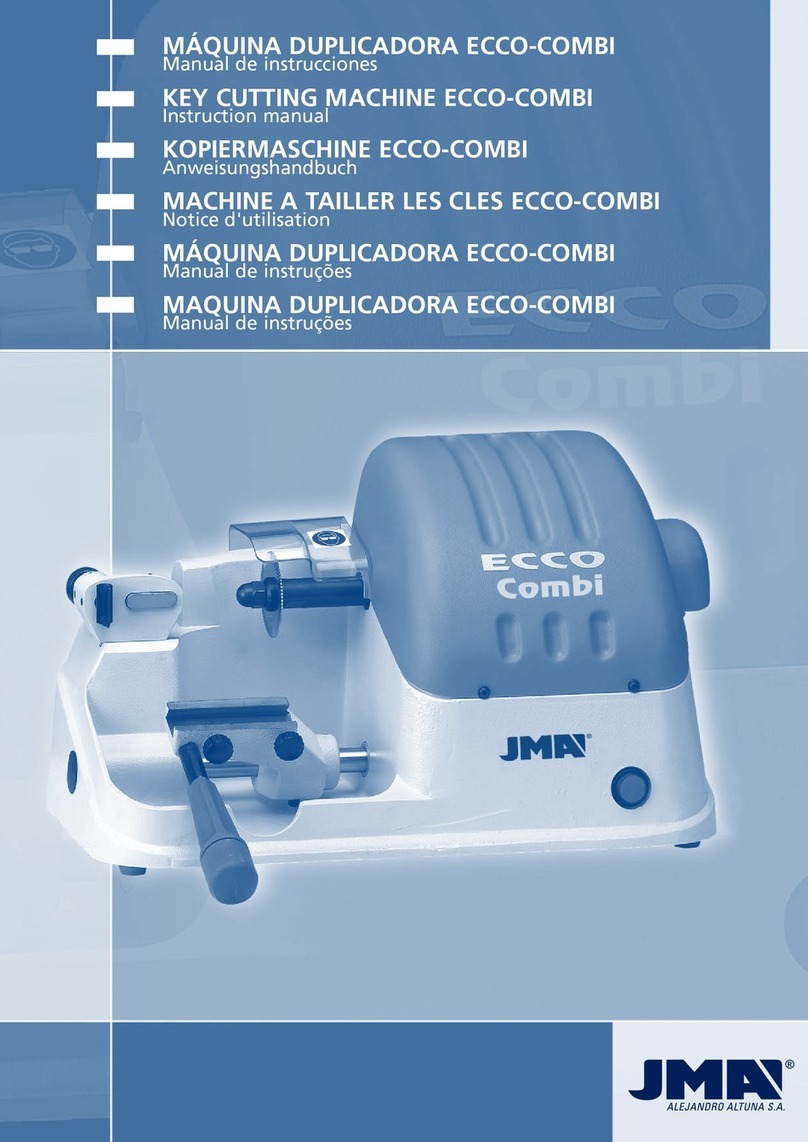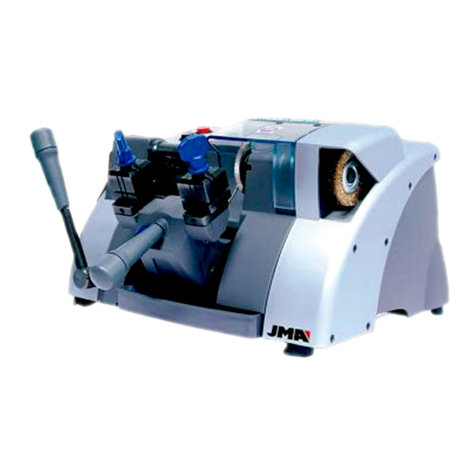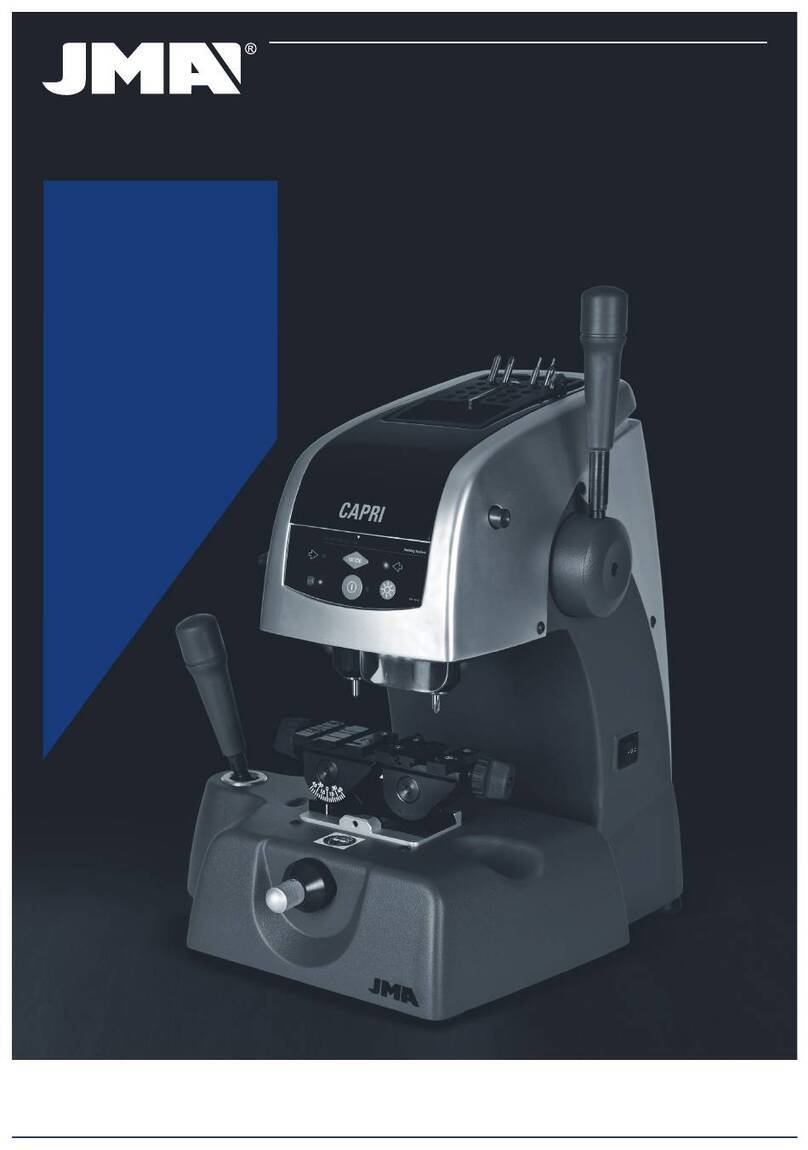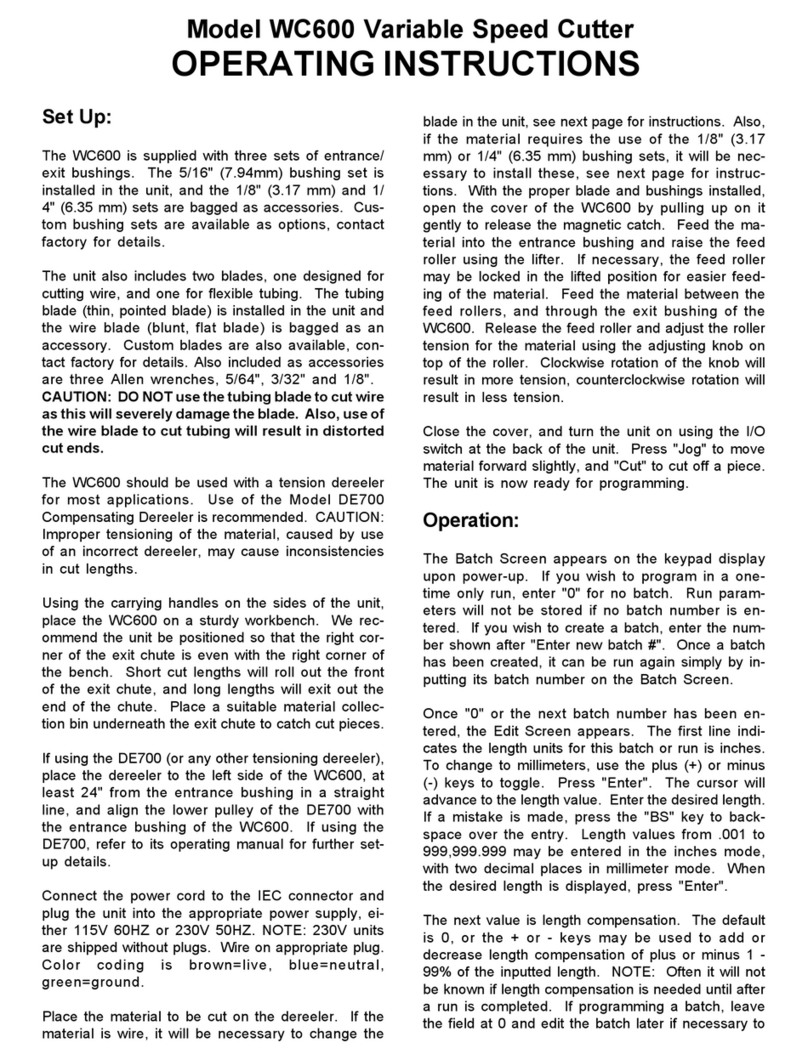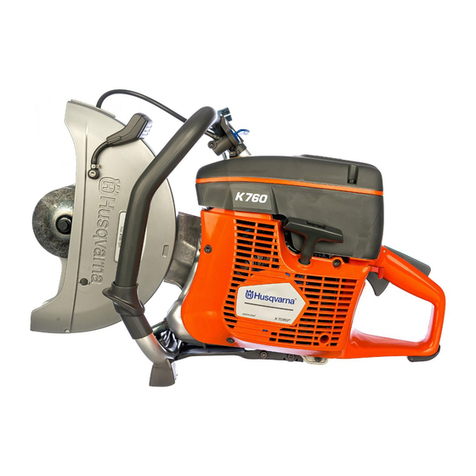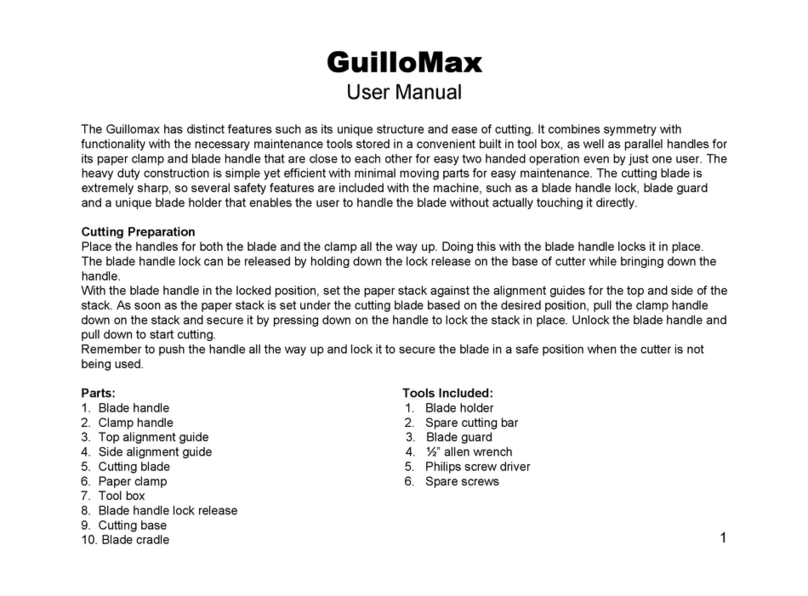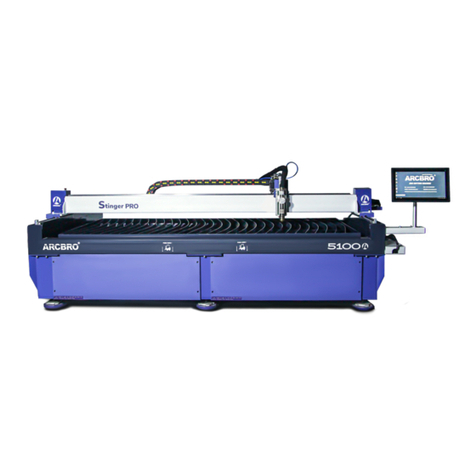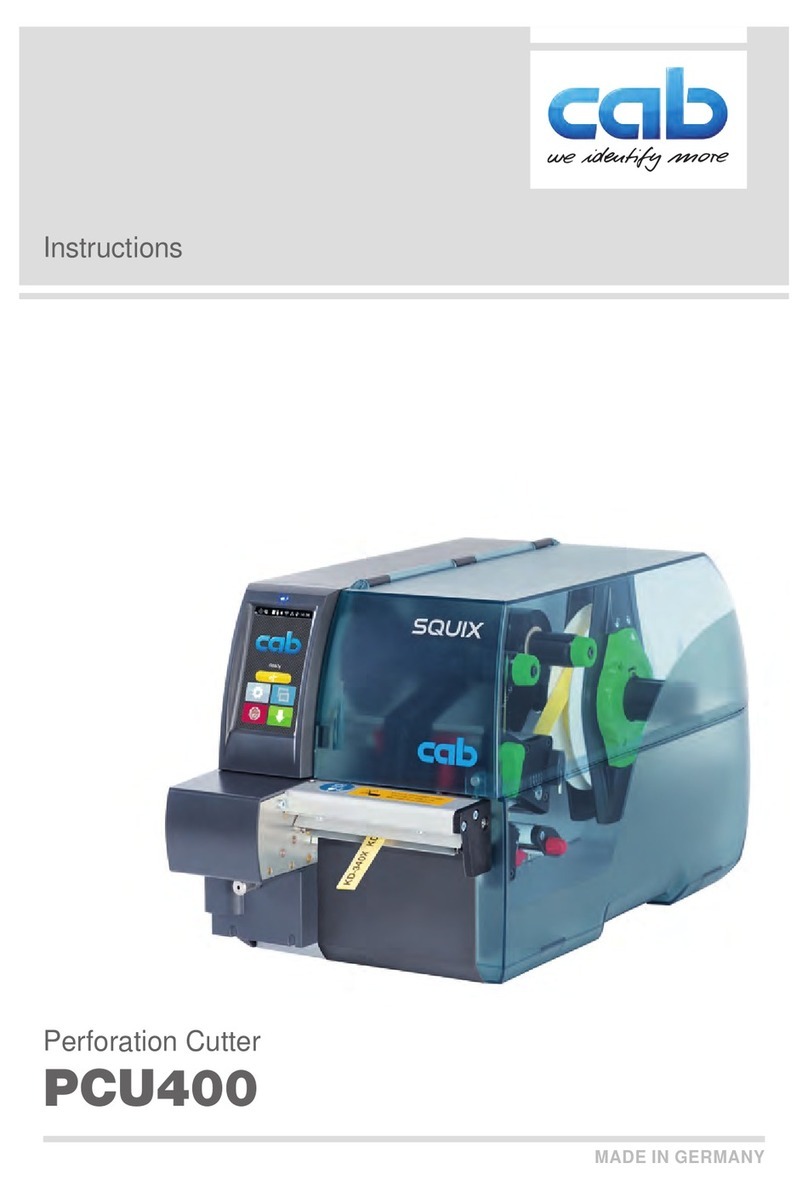
Español
8
3.2.2 CIFRADO DE LLAVES FRONTALES
• Bloquear el giro de la mordaza derecha. Para ello, accionar la maneta “16”.
• Colocar la llave en la garganta transversal de la mordaza.
• Colocar la llave de manera que el paletón asimétrico respecto de la caña, quede
mirando hacia abajo.
• Empujar la llave hasta que la parte trasera del paletón haga tope contra la cara
anterior de la mordaza.
• Es importante que el paletón de la llave quede lo más horizontal posible.
• Teniendo en cuenta estos detalles, amarrar las llaves en las mordazas.
• Para mayor comodidad a la hora de amarrar las llaves en las mordazas, se
recomienda bloquear el eje X y el eje Y (de esta manera, el carro de la máquina
se mantiene quieto).
• Poner en marcha el giro de la fresa, accionando el correspondiente interruptor.
• Acercar las llaves hacia la Fresa y el Palpador. Recomendamos trabajar
pausadamente, sin forzar la fresa.
• Si durante el duplicado se producen rebabas en la llave duplicada, éstas se
eliminarán utilizando el cepillo.
3.2.3 CIFRADO DE CORTES VERTICALES
• Reemplazar el carro BIT por el carro REGATA.
• Para mayor comodidad a la hora de intercambiar estos carros, se recomienda
bloquear el eje X y el eje Y de la máquina. De esta manera, el carro principal de
la máquina se mantiene quieto.
• Los carros BIT y REGATA se sueltan y amarran mediante el accionamiento de la
maneta “13”.
• El carro BIT se extrae tirando de él hacia el lado derecho.
• El carro REGATA se introduce de derecha a izquierda, hasta que se sienta un
tope interno.
• Amarrar la llave virgen y la llave a cifrar en sus correspondientes mordazas,
actuando sobre las manetas “S”.
• El paletón de la llave debe hacer tope contra la parte inferior de la mordaza.
• El paletón de la llave debe apoyar contra la pared vertical de la mordaza.
• Poner en marcha el giro de la fresa, accionando el interruptor correspondiente.
• Con la palanca “W” en su posición más superior, acercar las llaves a la Fresa
“C” y al Palpador “T”.
• Introducir el Palpador en la ranura de la llave a duplicar.
• Desplazar suavemente la palanca “W” hacia abajo. Recomendamos trabajar
pausadamente, sin forzar la fresa.
• Repetir esta misma operación, las veces necesarias hasta completar el cifrado
de los cortes verticales de la llave.
• Si durante el cifrado se producen rebabas en la llave duplicada, éstas se
eliminarán utilizando el cepillo.
4.- MANTENIMIENTO
A la hora de ejecutar cualquier operación de mantenimiento, es necesario cumplir los
siguientes requisitos:
• Nunca se debe efectuar ninguna operación con la máquina en marcha.
• El cable de alimentación, se debe desconectar de la conexión eléctrica.
• Se han de seguir estrictamente las indicaciones de este manual.
• Utilizar piezas originales de repuesto.
4.1 SUSTITUCIÓN DE LA FRESA
Para sustituir la fresa, proceder de la siguiente manera:
• Apagar y desenchufar la máquina.
• Introducir la varilla “A” que se suministra junto con los accesorios, en el orificio
que bloquea el giro del cabezal. Para buscarlo, girar el cabezal con la mano.
• Con la llave fija “B” que también se suministra junto con los accesorios, soltar
la tuerca “E”. Tener en cuenta que la tuerca “E” es de rosca izquierdas.
• Extraer la fresa “C” desgastada.
• Instalar la nueva fresa “C”, y amarrarla apretando la tuerca “E”. Revisar que
la fresa quede montada con sus dientes de corte orientados en la posición
correcta. Tener en cuenta que la fresa gira en sentido horario.
• Extraer la varilla “A”.
• Tras la sustitución de la fresa, se recomienda realizar el “Reglaje de
profundidad de corte”. El procedimiento se indica en el punto 3.1.2 del presente
Manual.
4.2 SUSTITUCIÓN DEL PALPADOR
Para sustituir el palpador, proceder de la siguiente manera:
• Apagar y desenchufar la máquina.
• Soltar el tornillo “F”, utilizando la llave allen del nº4 que se suministra junto con
los accesorios.
• Extraer el palpador “T” desgastado.
• Instalar el nuevo palpador “T”. Asegurándose de que la parte trasera del
palpador apoya contra el soporte “G”, apretar el tornillo “F”.
• Tras la sustitución del palpador, se recomienda realizar el “Reglaje de
profundidad de corte”. El procedimiento se indica en el punto 3.1.2 del presente
Manual.
4.3 SUSTITUCIÓN DEL CEPILLO
Para sustituir el cepillo, proceder de la siguiente manera:
• Apagar y desenchufar la máquina.
• Introducir la varilla “A” que se suministra junto con los accesorios, en el orificio
que bloquea el giro del cabezal. Para buscarlo, girar el cabezal con la mano.
• Soltar el tornillo “H”, utilizando la llave allen del nº4 que se suministra junto con
los accesorios.
• Extraer el cepillo “J” desgastado.
• Instalar el nuevo cepillo “J” y amarrarlo apretando el tornillo “H”. No apretarlo
con mucha fuerza, para que en la próxima sustitución del cepillo, el tornillo “H”
se pueda soltar con cierta facilidad.
• Extraer la varilla “A”.
•






